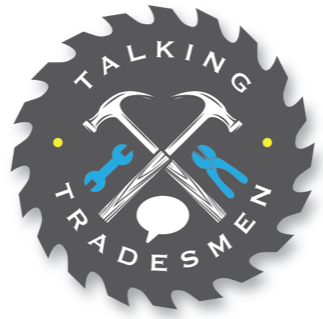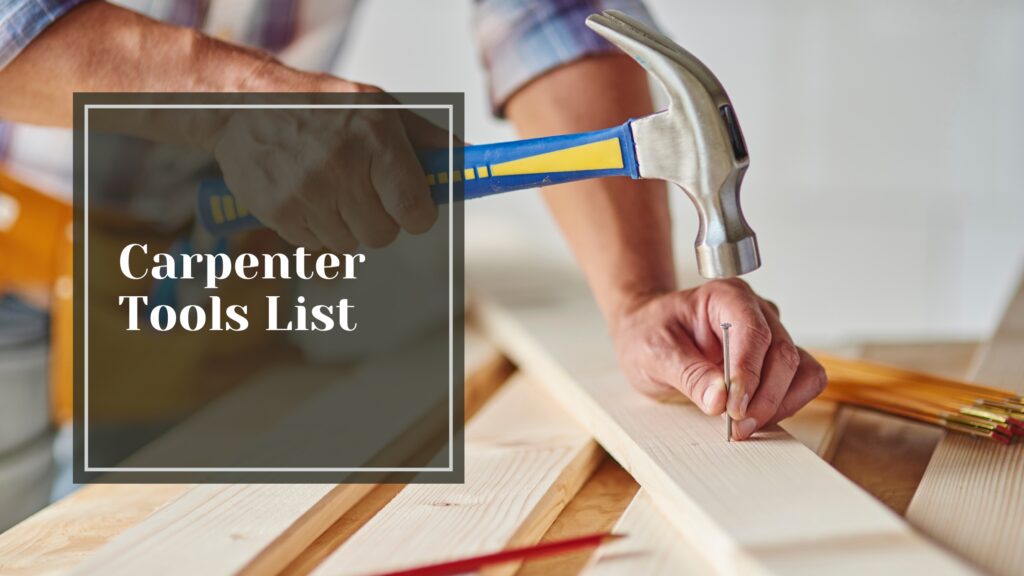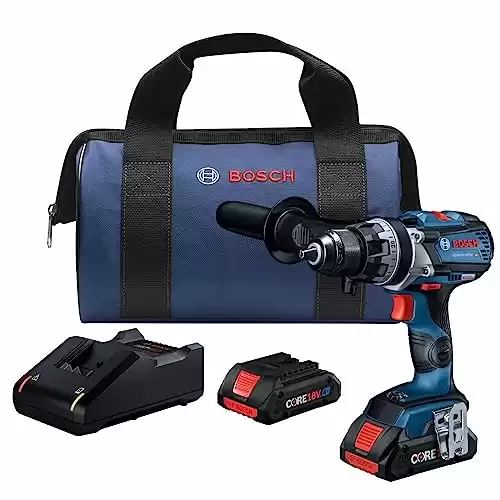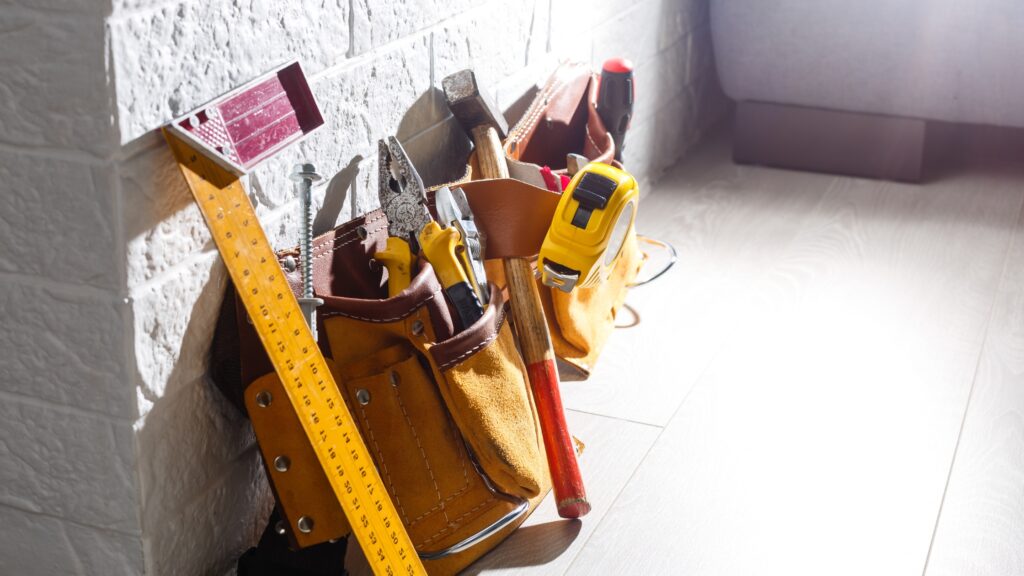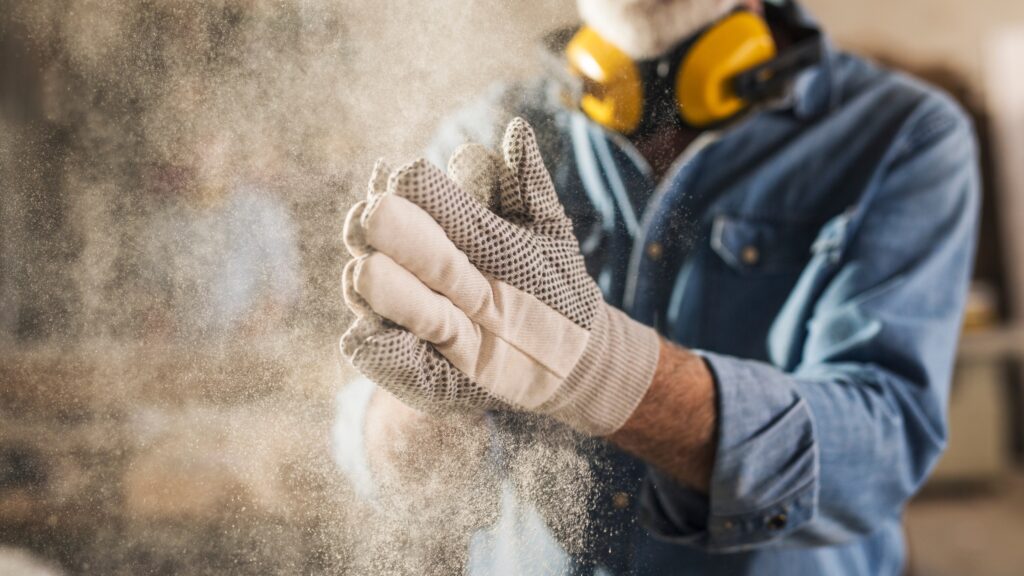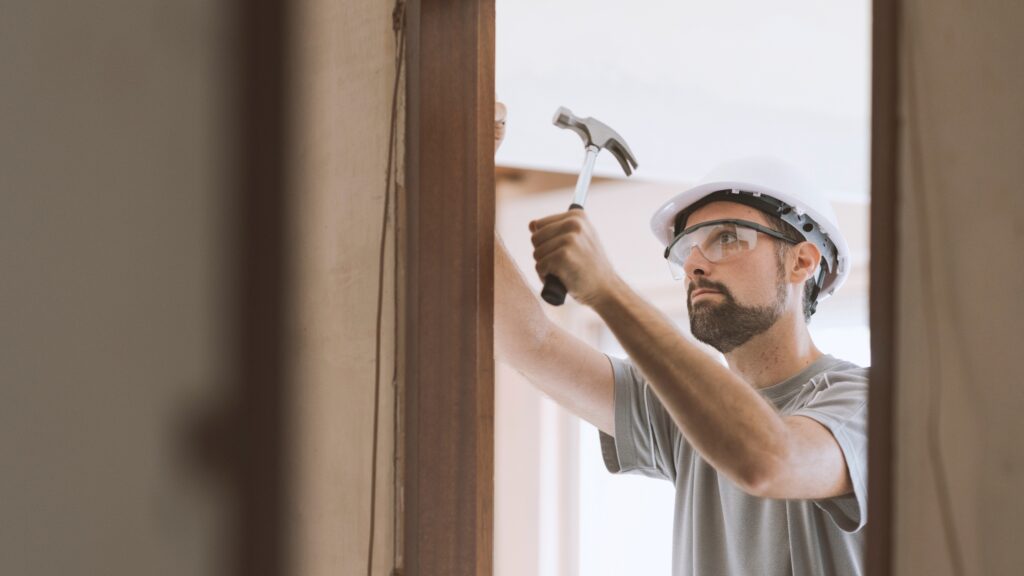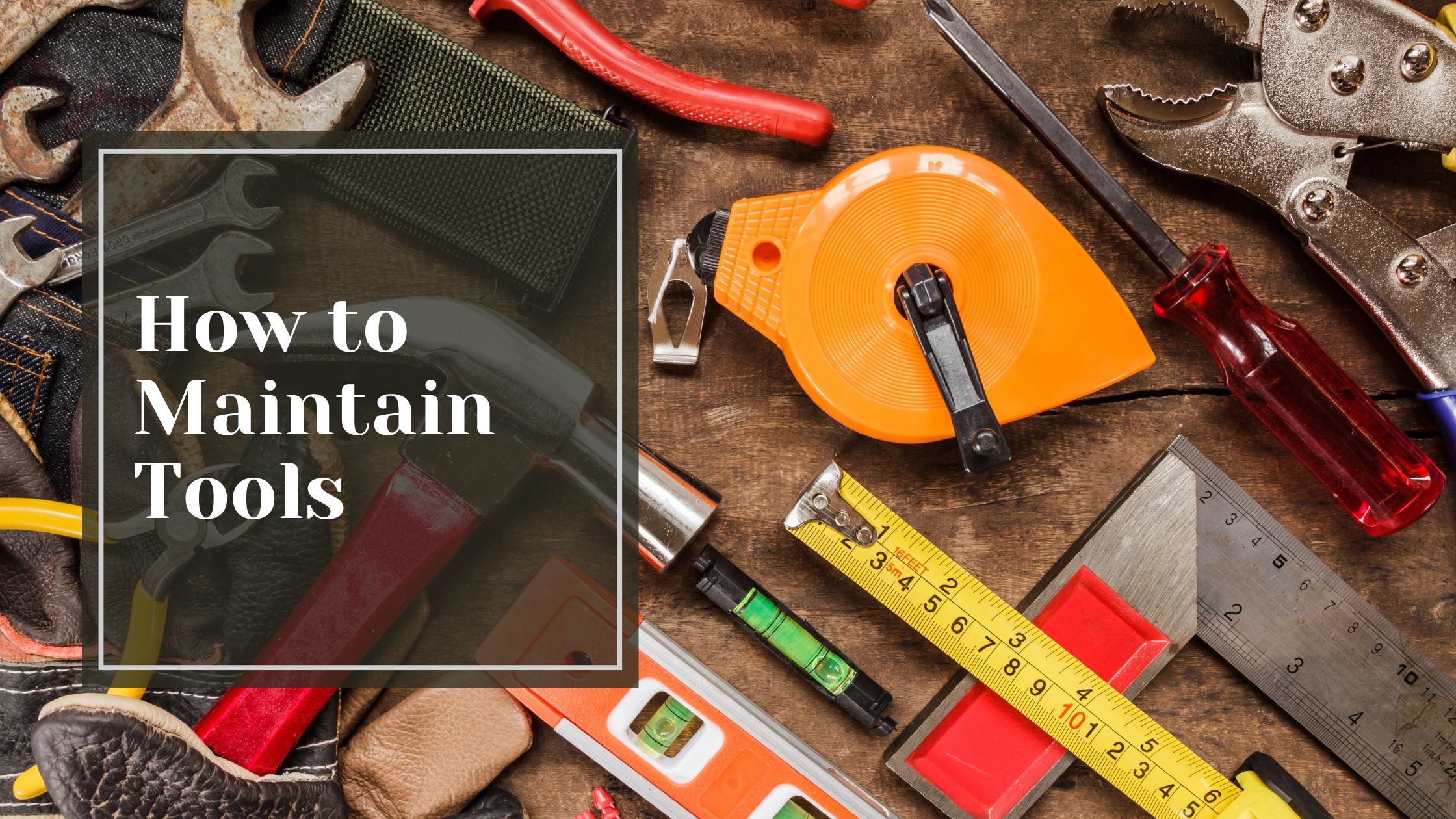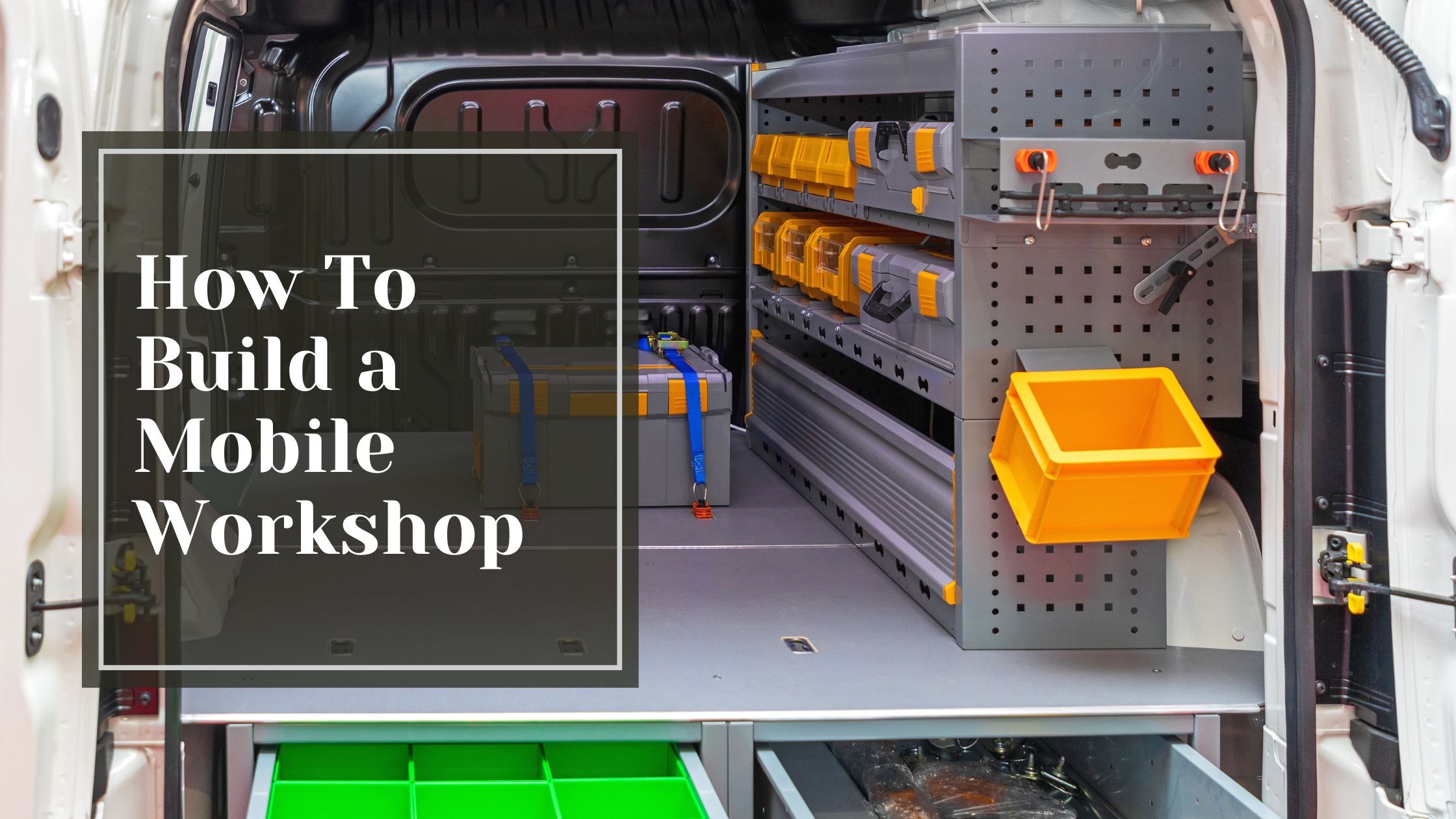Whether you’re new to this or just want to get better, it is important to have the right equipment at hand. But let’s be honest, if you don’t know what you’re after going into a hardware store can feel like visiting a foreign land. That is where we come in. We have compiled the ultimate carpenter tools list to help you take on any project with confidence; let us begin.
Table of Contents
Toggle
Basic Hand Tools Every Carpenter Needs
The Essentials for Precision and Efficiency
Every carpenter’s toolkit should start with the essentials. These basic tools form the foundation of any woodworking project and allow for accurate measurements, marking, cutting, and shaping of wood. Let us then look at the must-have hand tools that will make your work worth its salt.
First up, high-quality measuring tape comes in handy. This essential instrument ensures that you maintain precision while making cuts. Add carpenter’s pencil as well and you are on your way.
Afterwards, buy yourself a good strong hammer too. A reliable hammer will be very useful when it comes driving nails or even removing them depending on your needs. Then there is mallet which is great for more intricate jobs that keep pieces together without causing indentations when tapped together.
Cutting and Shaping Tools
Every carpenter should possess a good hand saw in his toolkit. It can make straight cuts in different types of wood. When you need to be more exact, a coping saw will help especially when you are working with limited space.
Chisels are also very important since they do not only clean up joints but also carve details and remove waste wood. A range of sizes is available for that purpose.
Planes cannot be left out! These are tools for smoothing as well as shaping wooden surfaces. The block plane is usually used for small works while the jack plane can handle larger ones without difficulty.
Measuring and Marking Accessories
Ensure that you have a combination square because accuracy is vital in carpentry. This tool helps you check angles, mark lines, and determine if your work is level or plumb.
Finally, take with you a utility knife. You can use it to score wood, trim edges and cut through tough materials. These essential hand tools will enable you to undertake any carpentry project confidently and skillfully.
“The Carpenter's New Guide” by Peter Nicholson - Delve into this comprehensive guide, rooted in true geometrical principles. Explore carpentry and joinery lines while gaining insights into factors influencing income, including geographic variations and timber strength. A must-read for carpenters navigating diverse challenges in the field.
Power Tools to Add to Your Carpenter Toolbox
Whether you are a DIY enthusiast or a seasoned professional, power tools are an essential tool for every carpenter. Using them can help you save time and energy while also making it possible for you to do such complex projects quite easily. We will look at some of the must-have power tools in a carpenter’s arsenal.
Circular Saw
A carpenter’s toolbox is incomplete without a circular saw. This powerhouse can be used to make fast work of straight cuts into different materials including wood, plywood and even some metals. When shopping, look for models with adjustable depth and bevel settings so that it may be more versatile. Quick tip: buy multiple high quality blades meant for various materials to maximize your saw’s potential.
Cordless Drill
When it comes to power tools, cordless drill is the Swiss Army knife. It is ideal for drilling holes, driving screws or even mixing paints with the right attachment. Consider purchasing one that has variable speed control and reversible function. Besides, don’t forget acquiring diverse drill bits as well as driver heads suitable for any job that may come across your way.
Power Sander
A power sander will take away soreness from your arms and leave sleek, soft surfaces. You can save hours of manual sanding by going for either orbital, belt or random orbital sander. If you would love to work in tight corners and edges during finishing then detail sander is the best.
Jigsaw
For a jigsaw, when straight lines aren’t enough. A versatile tool that cuts curves, circles and intricate patterns in wood, plastic or even thin metal. For smoother cuts look for a model with variable speed control and orbital action. With the right blade, you can even make plunge cuts for interior cutouts – perfect for installing electrical boxes or creating decorative elements.
Carpenter Tool Belt and Storage Solutions
The difference between efficiently organizing your carpenter tools vs not comes down to having the right storage solutions in place. We are going to look at some important options that will ensure your tools are just an arm’s length away while secure at the same time.
Tool Belts
A carpenter’s best buddy is a well-made tool belt that allows one to have their frequently used tools right on the waist as you move around the site. Look for a belt with multiple pockets and loops to fit different types of tools such as hammers, measuring tapes or pencils, among others. While leather belts are durable and have been in use for decades, nylon options are lighter in weight. Some even come with suspenders for additional support during long working days.
Tool Boxes and Chests
A sturdy tool box or chest is a must-have for bigger tools and equipment. They are available in various sizes and materials, ranging from small durable plastic boxes for quick assignments to heavy metallic chests that can store all the items of a wide set of tools. Think about the following:
-
- Various compartments provided for storage organization
- Dismountable trays to reach frequently used items with minimum effort
- Wheels that make it simple to roll around in larger workspaces
Wall-Mounted Storage
In the home workshop, wall-mounted storage can help you maximize space. You can customize your tool layout with pegboards which are flexible. A slat wall system, on the other hand, provides you a more robust option as it can hold heavier tools as well as accessories. When it comes to magnetic strips – they are perfect for keeping metal objects like chisels and screwdrivers at an arm’s length.
Safety Equipment for Carpentry Work
When it comes to carpentry, safety should always be your top priority. Let’s dive into the essential safety gear you’ll need to protect yourself while working with wood.
Eye Protection
Your eyes are irreplaceable, so guard them well! Always wear safety glasses or goggles to shield your peepers from flying wood chips, sawdust, and other debris. Look for impact-resistant lenses that meet ANSI Z87.1 standards for the best protection. If you wear prescription glasses, consider getting prescription safety glasses or wear over-glasses goggles.
Hearing Protection
Power tools can be loud enough to damage your hearing over time. Invest in a good pair of earplugs or earmuffs to protect your ears. For occasional use, disposable foam earplugs work well. If you’re spending long hours in the workshop, consider getting custom-molded earplugs or electronic noise-canceling earmuffs.
Respiratory Protection
Sawdust and wood particles can irritate your lungs and even cause long-term health issues. A dust mask is a must-have for any carpentry project. For basic tasks, a disposable N95 respirator will do the trick. If you’re working with treated wood or doing a lot of sanding, upgrade to a half-face respirator with replaceable filters.
Hand Protection
Your hands are your most valuable tools, so keep them safe! Wear sturdy work gloves when handling rough lumber or operating power tools. Look for gloves with reinforced palms and fingertips for extra durability. For precision work, try thin, cut-resistant gloves that allow for better dexterity.
Carpenter Tools List
So there you have it – a comprehensive list of must-have carpenter tools to get you started. Remember, you don’t need to rush out and buy everything at once. Start with the essentials and build your collection over time as your skills and projects grow. The most important thing is to invest in quality tools that’ll last. And don’t forget to take good care of them! Clean and maintain your tools regularly, and they’ll serve you well for years to come. Now get out there and start building something awesome. With the right tools in your belt, you’ve got this!
Frequently Asked Questions
What Are The Essential Hand Tools Every Carpenter Needs?
Essential hand tools for every carpenter include a high-quality measuring tape, carpenter’s pencil, strong hammer, mallet, hand saw, coping saw, chisels, planes, combination square, and utility knife. These tools are crucial for precision, measuring, cutting, and shaping wood in various carpentry projects.
Which Power Tools Should A Carpenter Have In Their Toolbox?
A carpenter’s toolbox should include power tools like a circular saw, cordless drill, power sander, and jigsaw. These tools help save time and effort while enabling more complex tasks such as cutting, sanding, and drilling, making them indispensable for both DIY enthusiasts and professionals.
How Should A Carpenter Organize Their Tools For Efficiency?
Carpenters can organize their tools efficiently using a well-made tool belt, toolboxes, chests, and wall-mounted storage solutions like pegboards or magnetic strips. These storage options ensure tools are easily accessible, well-organized, and secure, enhancing productivity on the job.
What Safety Equipment Is Necessary For Carpentry Work?
Essential safety equipment for carpentry includes eye protection (safety glasses or goggles), hearing protection (earplugs or earmuffs), respiratory protection (dust masks or respirators), and hand protection (work gloves). These items help protect carpenters from injuries and health hazards associated with woodworking.
How Can I Start Building My Carpenter Tool Collection?
Start building your carpenter tool collection by investing in essential hand tools like a measuring tape, hammer, and chisels. Gradually add power tools as needed, prioritizing quality over quantity. Maintain your tools properly to ensure they last longer and perform efficiently in all your projects.
